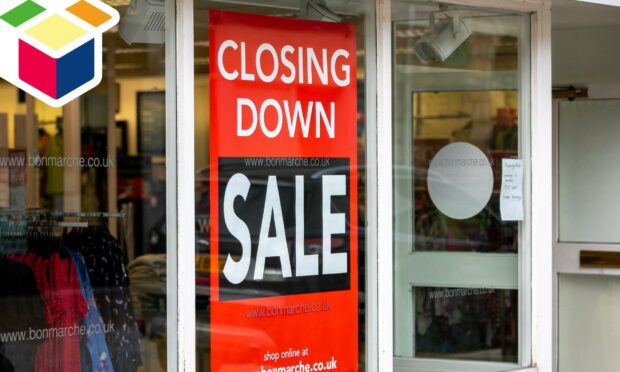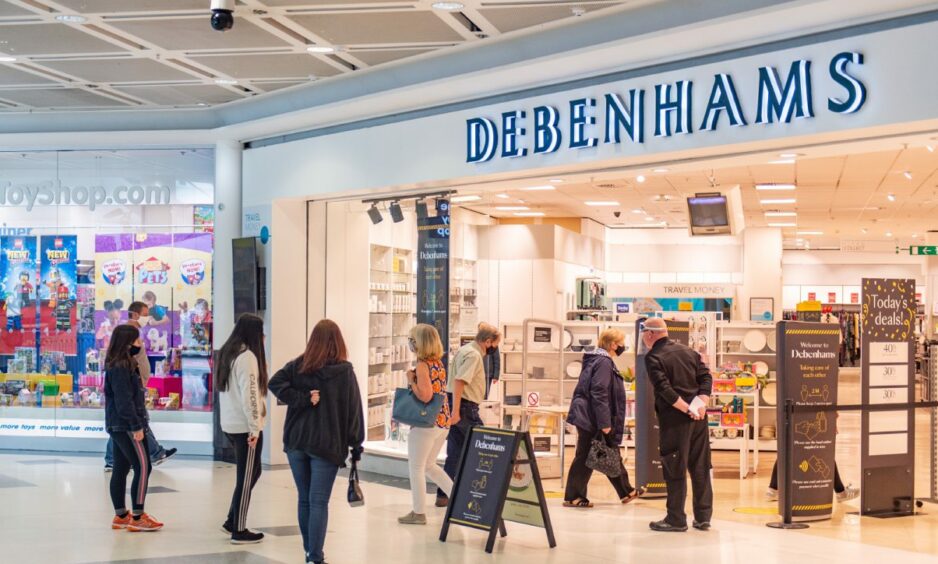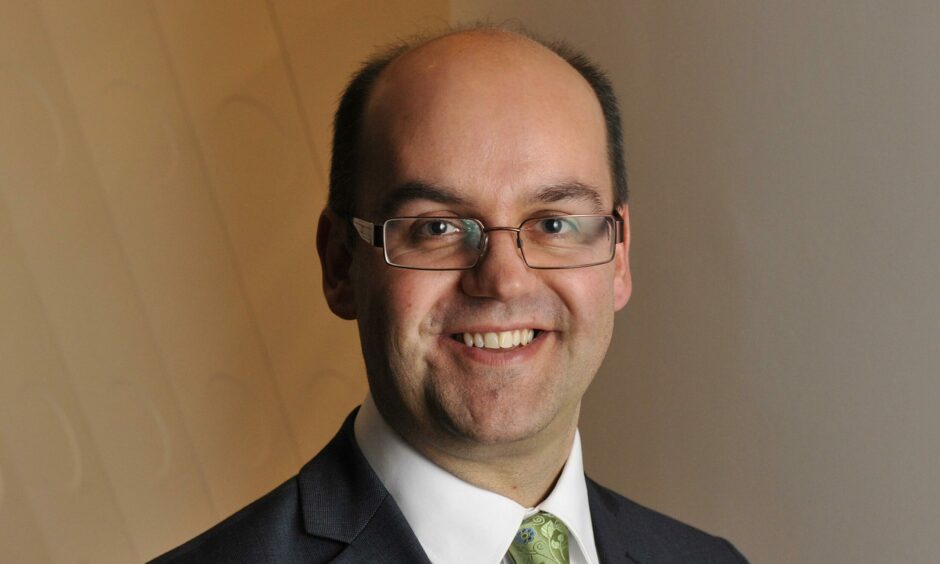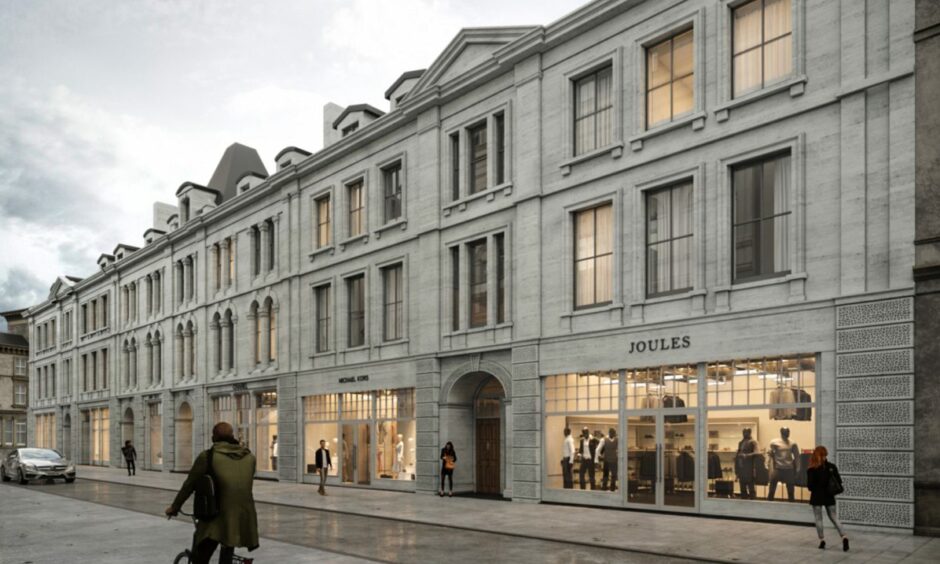One of the many effects of the Covid pandemic has been the toll it’s taken on High Street shops.
Like the human victims, it had a devastating effect on both the vulnerable and the seemingly strong.
In many cases it simply exacerbated underlying trends while highlighting the need for wider action.
The result has been a mounting tally of empty sites as businesses depart from town and city centres.
Inverness and Aberdeen have been among the places that have lost big names such as Debenhams, while John Lewis also disappeared from the Granite City.
In addition, a host of smaller and independent shops have gone as, by all accounts, centres have changed irrevocably.
Data from the Scottish Retail Consortium (SRC) shows footfall remains 17% below pre-pandemic levels and shop vacancies spiked to a six-year high.
However, figures released on Friday by the SRC show a slightly recovery for the first quarter of 2022.
The Scottish vacancy rate dropped from 16.1% to 15.8%.
What needs to be done?
This includes vacancies in High Streets, down from 15% to 14.8%, shopping centres 20.2% (from 20.4%) and retail parks 12% (from 12.6%).
It’s a small but welcome reduction, with one in six Scottish retail stores still lying empty.
It’s a familiar picture across the country and likely to be an issue at the council elections. So what can be done to help?
Business organisations like Inverness Bid have argued for action on business rates to help shops operating in the centres.
There have also been calls for schemes such as an internet sales tax to level the playing field and help bricks and mortar retailers compete with online stores.
SRC director David Lonsdale says another challenge in tackling empty shops is that many are owned by private sector landlords, rather than councils.
He said: “Obviously a healthy and vibrant High Street or town or city centre will make it more likely there will be fewer empty units.
“Councils may know or have a register of the landlords and could perhaps approach them to see if they need assistance marketing the property.”
The British Independent Retailers Association says high vacancy rates in the High Streets are at least partly due to the cost of running a retail shop being much more than an online retailer.
Reducing the burden on business
CEO Andrew Goodacre said: “If we want to reduce the number of shops becoming vacant and bring them into more use, the Scottish government should consider reducing the burden of business with a wholesale review.
“Business rates continue to be a disproportionate burden for retailers and addressing this problem will save many shops from closing and encourage investment to bring empty one back into use.”
He also suggests temporary use of shops, including pop-up stores, to allow entrepreneurs to test their business idea in a retail setting with limited risk.
“The larger premises closed by the chains need a complete change of use – office or residential conversions.
“This in turn will create a local economy for the businesses that remain in that area.”
Malcolm MacLeod, Highland Council’s executive chief officer for infrastructure, environment and economy, says the pandemic accelerated the pattern of High Street store closures due to online shopping.
Former retail units in Academy Street, Union Street, Church Street and Castle Street are all being turned into flats.
He said: “It’s part of our strategy to find new uses for buildings or sites and bring people back to live in the centre.
“These new developments will bring life back into the centre and make it more of a 24 hour economy than before.”
Signs of optimism
Phil Prentice, chief officer of Scotland’s Towns Partnership, believes there are signs for optimism.
He said: “The pandemic has been a massive challenge to all town centres.
“But there are some signs that new retail growth is emerging now that restrictions have been removed.
“I would hope that will continue to drive demand for town centre retail space.
“We know from the Scotland Loves Local campaign that the public value their local places and we need to capture that sentiment and embed a new culture of shopping locally.”
A Scottish Government spokesman said the latest figures showing a slight decrease in the Scottish vacancy rate is encouraging.
“We are working with all of Scotland’s cities and towns to support their recovery and help build thriving, sustainable towns and cities of the future.”
He said this includes a £80m Covid economic recovery fund, a £6m city centre recovery fund, a £325m place based investment programme, as well as the Scotland Loves Local programme and the recently-published retail strategy and town centre action plan.
The Scottish Government has provided more than £4.7 billion in support since the beginning of the pandemic,” the spokesman said, including around £1.6 billion in rates relief.
Pressing for more support
“However, the biggest threat to our town and city centres and retail recovery, and consumers having income to spend, is the cost of living crisis.
“We will continue to press UK Government to do more to support people and businesses during what are very tough times, exacerbated by the impact of Brexit and the pandemic.”




